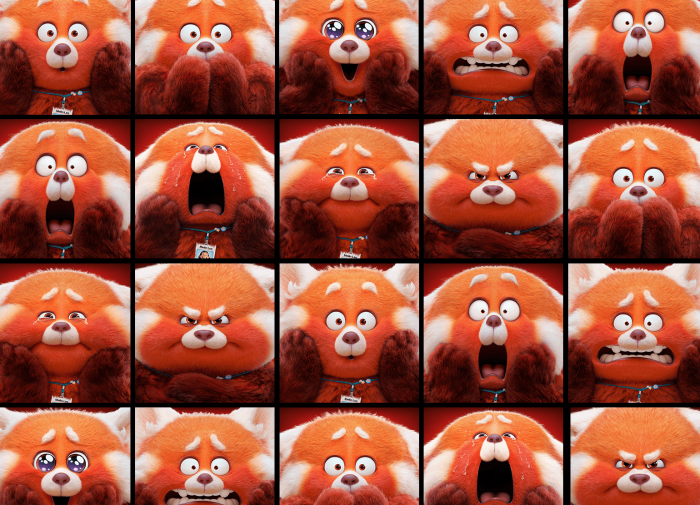Amid calls to patent his then-state-of-the-art technique, animation legend Winsor McCay once joked, “Any idiot that wants to make a couple of thousand drawings for a hundred feet of film is welcome to join the club.”
It’s true: the animation industry was built on obscene levels of monotony and detail. For much of the 20th century, it took as many as 1,500 drawings to produce just two minutes of colorful movie magic. Because of the eye-popping effort required, an animator was an animator, full stop; you couldn’t fault someone for saying that animation just might not be for them.
By now, we’ve come a long way from the stop-motion era. New technologies make animation and motion graphic development accessible to designers from across disciplines. Best of all, the work is light-years faster and far less labor intensive than in McCay’s day. And the timing couldn’t be better; the market for motion graphics is expected to see a compound annual growth rate of 12.5% by 2031.
So there, you don’t have to dedicate your life to animation to become proficient at it. Does that mean it’s time for you to give it a try? Let’s take a closer look.
The design business is moving
Today motion and animation are a crucial part of a brand’s toolkit, creating human connections that speak to audiences and communicate messages simply. “Motion design is not only about moving objects but expressing emotions,” says Sean Dong, a Baltimore-based motion designer whose work helps bring New York Times features to life.
In addition to providing that intangible human element, animation design is a big business, high on many clients’ wishlists. Leading brands —Spotify, Amazon, PayPal and Mastercard— are doubling down on motion. There’s even a growing trend to trademark animated logos (read: don’t go recreating the roar of MGM’s Lion unless you want to take on a cadre of corporate lawyers).
What does this popularity mean for designers?
“Animation used to be seen as a ‘nice-to-have,’ but these days, it’s a fixture of project briefs,” says Mat Voyce, UK-based freelance motion designer who has worked with Disney+, Google, and Nike. “If a design concept doesn’t include animation, clients now often ask, ‘How can we add it in?’”
After getting his start as a graphic designer, Voyce shifted his focus to animated typography. As motion and video have continued to gain steam, shifting and up-leveling his skills paid off.
In his experience, competency in graphic design and animation is a way to stand out from the crowd; brands, agencies, and potential clients see real value in someone who can do both. Above all, Voyce outlines, “I see it as one way for designers to future-proof themselves.”
Where to start with animation tools
Just how big of a lift is it to add animation to your repertoire? And what tools are worth checking out? Luckily, gaining a foothold in animation doesn’t mean you need to start from square one or return to school full-time.
“Even if you’re not personally aiming to become an expert, understanding the possibilities that motion offers—and how it fits into design campaigns—is essential,” says Jon Mercuri, a graphic designer and design director.
Building up a base of knowledge in animation is an incremental process, but that doesn’t mean you need to be intimidated. For starters, there are resources and asset repositories that make the transition to animation easy for designers of all backgrounds. A few popular choices include:
- SVGator, which takes SVGs (scannable vector graphics), a file format that expands without losing quality, and turns them into animations or motion graphics. The platform lets you storyboard and tweak clip times in one interface all without writing any code.
- Blender, a 3D software. Blender supports the entire 3D video and animation pipeline, meaning designers can take advantage of its capabilities for modeling, rendering, and motion tracking. Although it has a massive catalog of features, most users can learn the basics quickly.
- LottieFiles, a curated library of motion and animation assets that lets designers create their own Lottie animations (a file type that functions across platforms and devices). It’s also useful for true beginners and designers focused on marketing, giving users the option to add brand colors and styles to animation and typography.
And while more advanced tools like Adobe After Effects (part of Adobe’s paid Creative Cloud) take a little more legwork, there’s a huge pool of free resources to give you a head start. Adobe offers tutorials directly on its site, while bootcamps from organizations like School of Motion let you jump-start your animation journey.
In the end, there’s no substituting practice. For Voyce, a little extra time each day eventually added a new dimension to his work. “When the lockdown set in during 2020, I took the hour I’d usually spend commuting and dedicated it to working with animation tools. There was a lot of trial and error, but I kept making progress.”
Whether you’re looking to make motion design your bread and butter or climb the ranks to become an art director, animation is a serious leg up.



